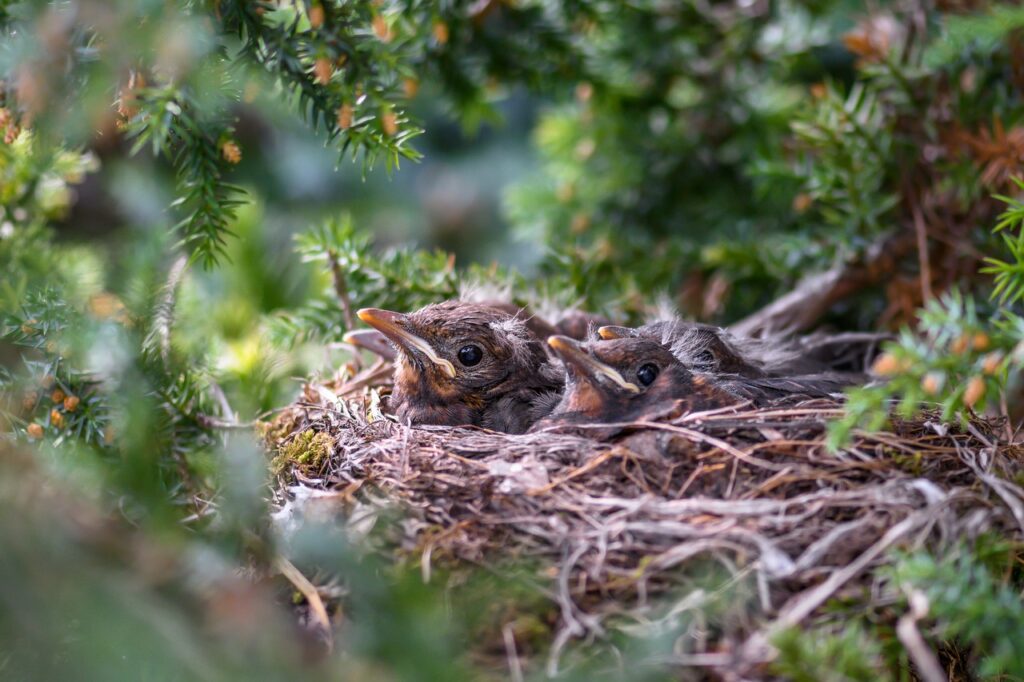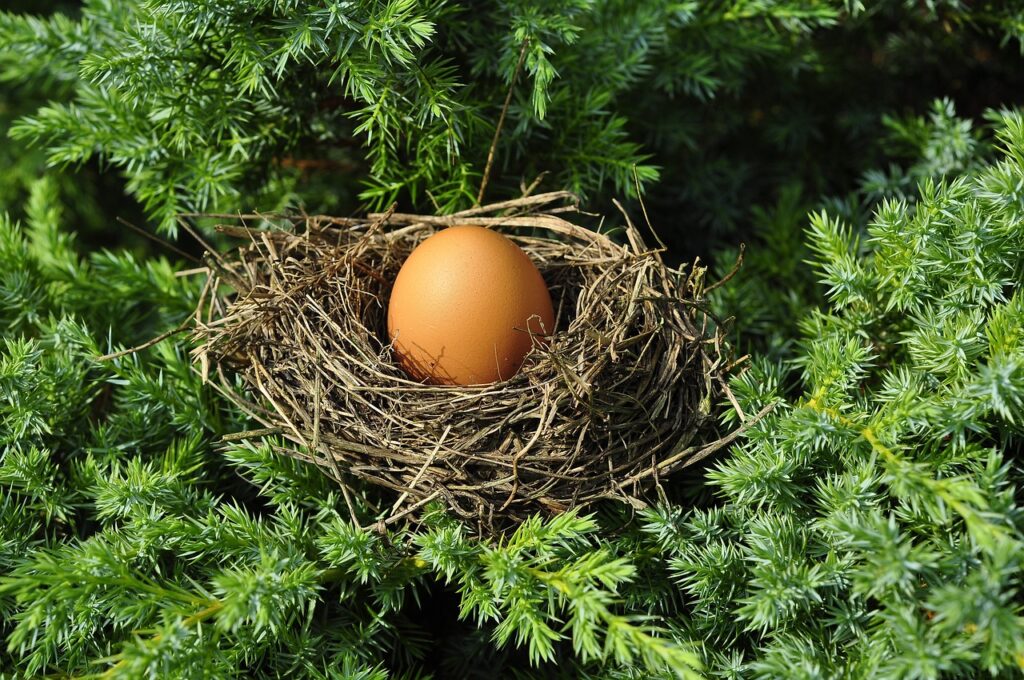Introduction:
In the sprawling tapestry of the natural world, birds stand out not only for their mesmerizing plumage and enchanting songs but also for their exceptional architectural prowess. Nest building, a seemingly spontaneous behavior, varies widely across species, showcasing a fascinating array of structures and materials. In this exploration, we peel back the layers of the avian world to unveil the intricate and often ingenious art of nest building.
1. The Marvel of Instinct: A Universal Drive to Nest
Nest building is deeply ingrained in the avian psyche, driven by a universal instinct for reproduction and protection of offspring. Birds employ an impressive range of techniques and materials, each tailored to the unique needs and environments of their species.

2. A Symphony of Styles: Diverse Architectural Designs
Birds exhibit an astonishing diversity of nest structures. From the meticulously woven cup nests of songbirds suspended in trees to the ground scrapes of shorebirds, the architectural variety reflects the ingenuity of each species.
3. The Builders: Species Spotlight on Master Architects
Weaverbirds (Ploceidae): Known for their intricately woven nests, some weaverbird species construct pendulous masterpieces, housing entire colonies within communal nests.
Baya Weaver (Ploceus philippinus): Masters of precision, Baya weavers create hanging bottle-shaped nests, showcasing remarkable symmetry and craftsmanship.
Ospreys (Pandion haliaetus): Impressive in size and durability, Osprey nests are massive structures built atop platforms or structures, often reused year after year.
4. Counting the Stitches: Weaverbirds and the Art of Weaving
Enter the enchanting world of weaverbirds, whose weaving skills rival those of human craftsmen. Witness the precision and complexity of their nests, constructed with an intricate interplay of beak and foot movements.
Fun Fact: A single weaverbird can make up to 500 to 600 trips to complete its nest, using materials such as grass, leaves, and even man-made items like string or plastic. The result is a symmetrical masterpiece, showcasing the bird’s dedication to creating a safe haven for its young.

5. Nature’s Recyclers: Innovative Use of Materials
Birds display remarkable resourcefulness in their choice of building materials. Some species repurpose natural elements like twigs, leaves, and mud, while others incorporate human-made items such as paper, string, or even discarded feathers.
Did you know? The Australian Brush-turkey (Alectura lathami) builds colossal nests made of leaves, twigs, and debris, creating mounds that can reach up to 15 feet in height and 40 feet in diameter.
6. Construction Crews: Collaborative Nesting Behaviors
Certain bird species engage in collaborative nest building, with both partners contributing to the construction process. This teamwork strengthens pair bonds and ensures the nest’s stability and durability.
Statistical Insight: In many cases, both male and female partners contribute to the nest-building process. For instance, bald eagles (Haliaeetus leucocephalus) collaborate in constructing massive nests that can weigh up to a ton.

7. Engineering Marvels: Nests That Defy Gravity and Predators
Some bird species push the boundaries of architectural innovation to create nests that defy gravity or deter predators. From the hanging nests of oropendolas to the strategically placed nests of raptors, these structures showcase an understanding of physics and predator avoidance.
Impressive Fact: Oropendolas, found in Central and South America, construct hanging nests using long fibers, creating intricate pendulum-like structures that sway in the breeze, making them challenging for predators to access.
8. Architects of the Sky: High-Rise Nests and Cliff Dwellers
Explore the fascinating world of birds that choose lofty locations for their nests, such as the peregrine falcon and the cliff swallow. Witness their mastery in constructing nests on sheer cliff faces, utilizing the natural contours of the landscape to create secure nesting sites.
Fun Fact: Peregrine falcons, renowned for their speed and agility, often nest on high ledges of cliffs or buildings. Their scrape nests are simple yet strategically positioned, offering breathtaking views while providing a safe haven for their chicks.
9. Mud Masters: Swallowing the Art of Nest Building
Enter the realm of mud-nesters, where swallows showcase their expertise in crafting nests from mud pellets. Delve into the intricacies of their construction, examining the unique adaptations that enable these birds to create durable and snug homes under eaves, bridges, or even in the interiors of buildings.
Did you know? The cliff swallow (Petrochelidon pyrrhonota) builds gourd-shaped nests using mud pellets, creating colonies with multiple nests clustered together. This communal approach offers protection and promotes social interactions within the colony.
10. The Bowerbird’s Boudoir: Aesthetic Nest Building
Step into the world of bowerbirds, where nests transform into elaborate showcases of artistry. Male bowerbirds construct bowers and adorn them with a carefully curated collection of colorful objects to attract females. Explore the significance of these displays in courtship rituals and the lengths to which male bowerbirds go to create aesthetically pleasing environments.
Fascinating Detail: Bowerbirds are known for their exceptional attention to detail and color. Some species, like the satin bowerbird, arrange objects such as flowers, feathers, and even human-made items in specific color schemes, creating visually stunning bowers to woo potential mates.
Conclusion: The Enduring Legacy of Avian Architecture
In the world of birds, nest building is not merely a practical necessity but an art form, a testament to the creativity and adaptability of our avian counterparts. From the meticulous weavings of weaverbirds to the colossal mounds of brush turkeys, each nest tells a story of survival, love, and the enduring legacy of avian architecture in the natural world. As we unravel the mysteries of these intricate structures, we gain a deeper appreciation for the artistry that birds bring to the canvas of life.
